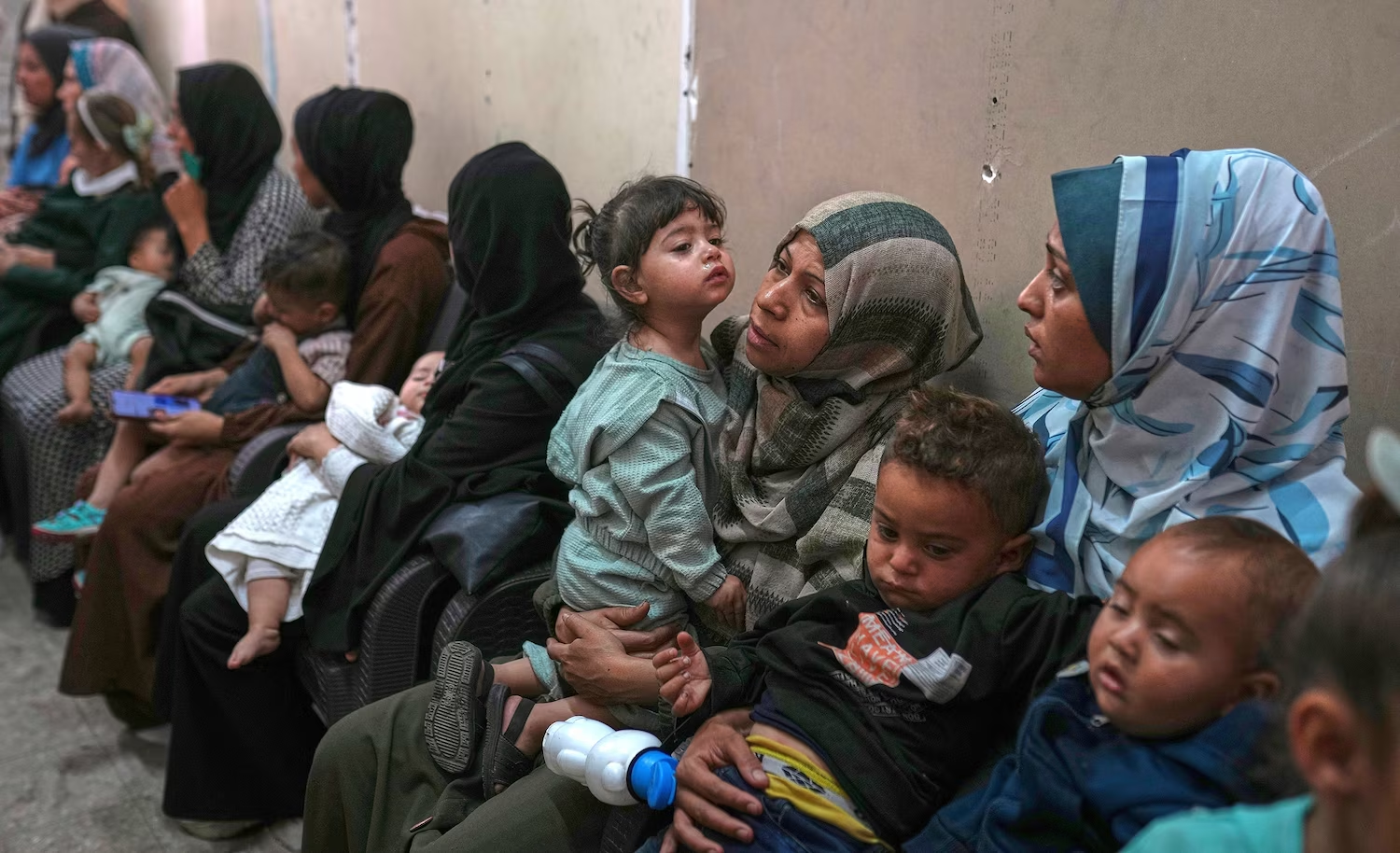The humanitarian crisis in Gaza has escalated to heartbreaking levels, with reports and video footage showing residents—many of them children—lining the roads, holding empty utensils in hopes of receiving food aid. These haunting images are a stark symbol of the worsening famine threatening the lives of over 2 million people in the Gaza Strip.
The World Food Programme (WFP) has sounded the alarm, urging immediate international intervention. The situation is particularly dire for children, the most vulnerable victims of this humanitarian catastrophe.
4-Year-Old Girl Faces Life-Threatening Deportation Amid Lifesaving Medical Treatment in U.S.
Children on the Brink of Starvation
Verified footage obtained by ABC News shows children gathered around makeshift community kitchens, their faces reflecting a painful mix of hope and despair. In one devastating scene, a young child cries as the last ladle of warm soup is served to others. Another video captures a child scraping flour mixed with dirt from the ground—an image that underscores the depth of desperation in Gaza.
UNICEF, the United Nations agency for children, has urgently called for action:
“Gaza’s children need food, water, and medicine. They need a ceasefire. But more than anything, they need immediate, collective action to prevent the unimaginable.”
Widespread Malnutrition and Medical Collapse
Photographs from Nasser Hospital in Khan Younis, Southern Gaza, show emaciated children suffering from acute malnutrition—a result of the blockade and near-total lack of humanitarian access. These young patients are not just statistics—they are lives hanging in the balance, many without the medical attention they urgently require.
According to Palestinian Ambassador Riyad Mansour, over 1,300 Palestinian children have been killed, and approximately 4,000 injured since the fighting escalated in March. In an emotional address to the UN Security Council, he described mothers holding their lifeless children and the global grief resonating from these scenes.
“Flames and hunger are devouring Palestinian children,” he said.
Blockade Halts Humanitarian Aid
Since March 2, the Israeli government has imposed a tight blockade on humanitarian aid in an effort to pressure Hamas to release hostages. This blockade has had devastating consequences for civilians, including a halt in food and medical supplies. Recently, more than a dozen World Food Programme aid trucks were looted in southern Gaza, further complicating already fragile delivery systems.
“The trucks were eagerly waiting to deliver vital food to a starving population,” the WFP reported. The looting, born of desperation, highlights the growing insecurity and instability caused by hunger and frustration.
Severe Aid Restrictions Limit Relief Efforts
Although some aid has resumed, tight restrictions limit the distribution of food to a few bakeries and select sites, preventing agencies from directly reaching families in need. Humanitarian experts warn that this model is ineffective and dangerous, especially for children and the elderly.
“Direct distribution to families is the most effective way to prevent famine,” said one WFP official. “Restricting aid access only worsens starvation.”
Hospitals on the Verge of Collapse
Gaza’s hospitals are overwhelmed, operating under severe shortages of supplies, equipment, and medical staff. Palestinian health workers are overextended, and international volunteers report unprecedented levels of trauma.
Dr. Feroz Sidhwa, an American physician volunteering in Gaza, described the conditions as the worst he has seen in his career:
“If this continues, there will be no Palestinian doctors left to care for the sick and injured,” he warned. “The healthcare system is on the brink of total collapse.”
Generational Damage and Global Responsibility
Beyond immediate needs, the long-term impact of this crisis is devastating. With homes, schools, and hospitals destroyed, Gaza faces generational trauma, poverty, and displacement. A generation of children is being shaped by hunger, disease, and violence—threatening the social and economic stability of the entire region.
Despite global outcry, political gridlock continues to hinder relief efforts. Calls for a ceasefire and expanded humanitarian access have been met with limited progress, while the window to prevent irreversible damage is rapidly closing.
A Call for Global Solidarity
The crisis in Gaza demands more than sympathy—it requires decisive action. The haunting images of starving children and grieving parents must serve as a wake-up call to the global community.
“Without immediate intervention, famine and mass loss of life are imminent,” warned aid workers on the ground.
Governments, humanitarian organizations, and citizens around the world must come together to provide unrestricted access to food, medicine, and shelter, and to push for a lasting ceasefire. Gaza’s children cannot wait.
Conclusion: The Time to Act Is Now
The humanitarian catastrophe in Gaza is a test of the world’s moral conscience. Every moment of delay costs lives. We must act now to ensure that no child dies of hunger under the watch of the international community.
Let the suffering of Gaza’s children not be another forgotten tragedy.
Let it be the catalyst for global compassion, justice, and peace.

